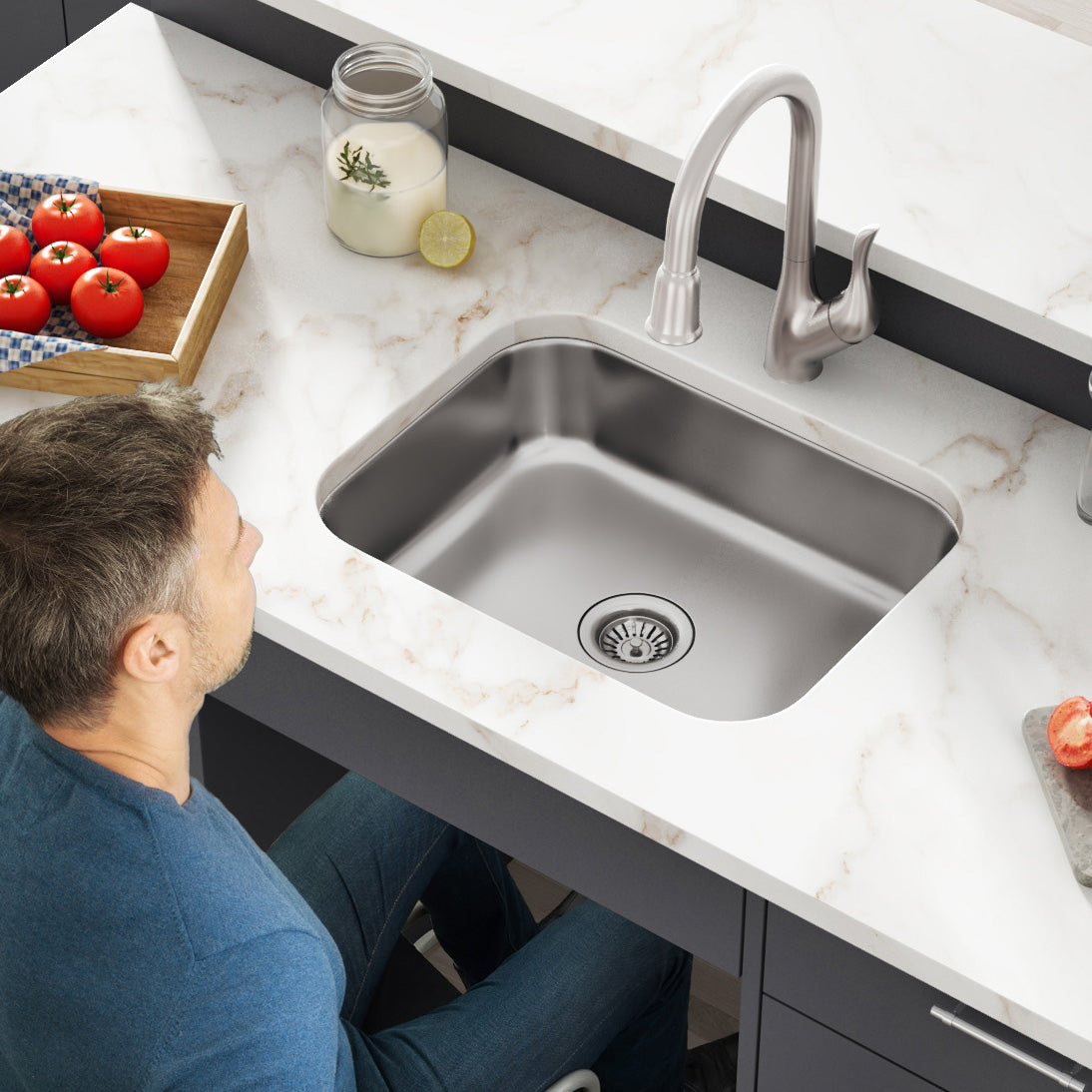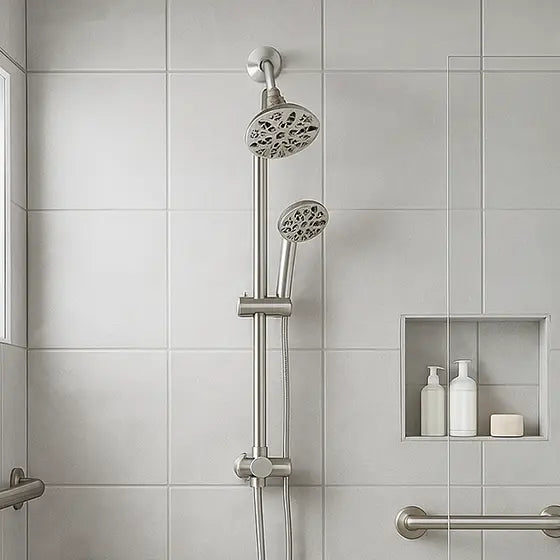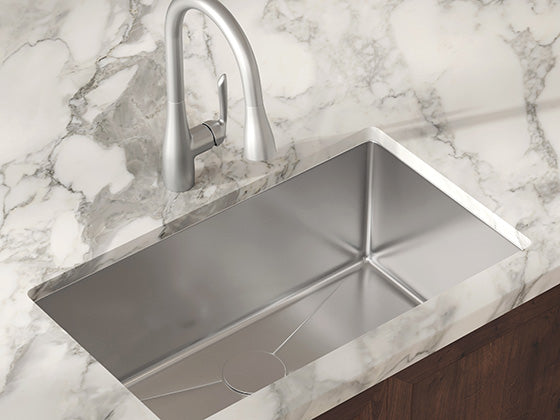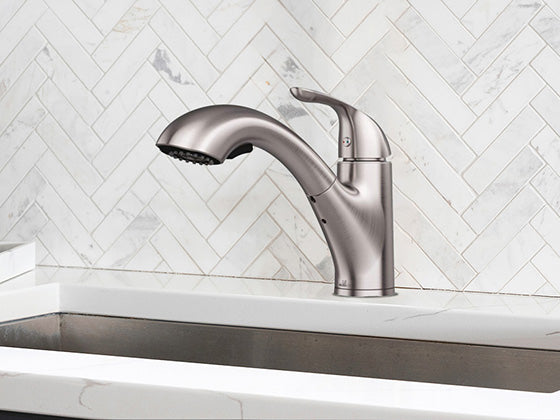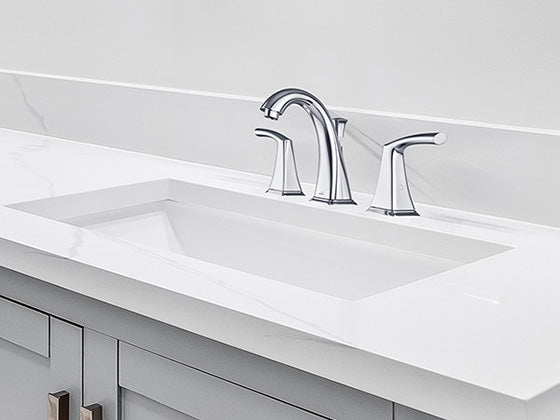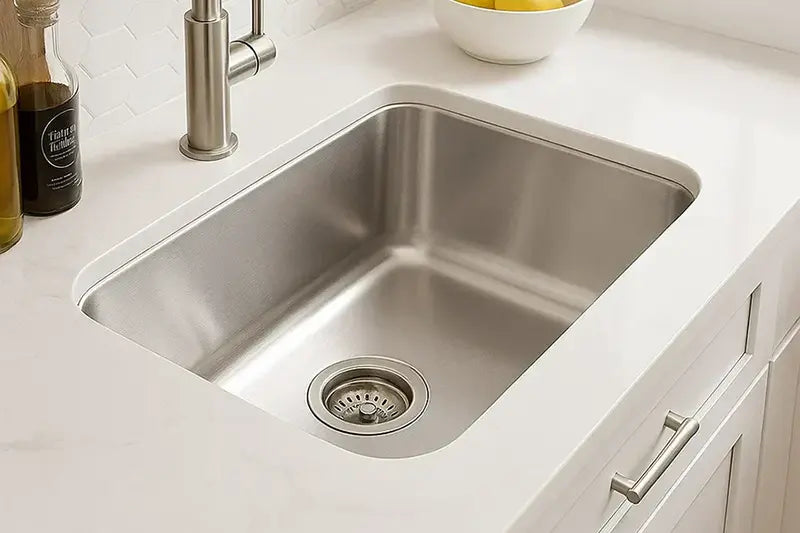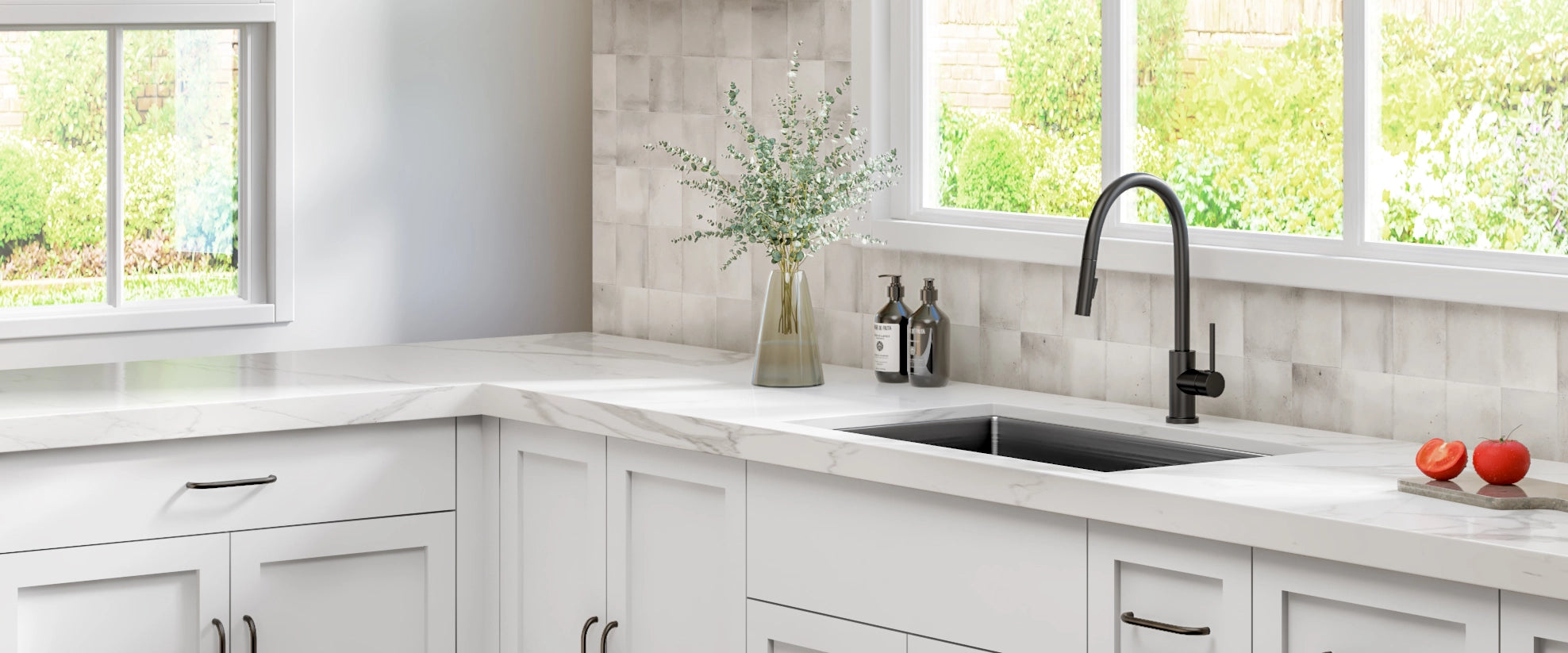When selecting undermount kitchen sinks, there are so many sizes available that it can be hard to choose the right one. One of the best places to start is by narrowing down the size based on the width of the cabinet. Standard cabinet sizes run in 3" increments.
For kitchens, common sizes include 27, 30, 33, and 36 inches, based on the left-to-right outer measurements. When installing undermount sinks, the inside measurement is the most important. Usually the inside measures 1 to 1-1/2 inches smaller than the outer measurement. For example, a 33-inch cabinet has about 31-1/2 inches of inside clearance from the left wall to the right.
Understanding Standard Sink and Cabinet Pairings
Before diving into the details, it helps to understand the standard pairings of sink sizes and cabinet widths. For undermount sinks, Allora recommends sinks at least 3 inches shorter than the outer cabinet length. For a 33-inch cabinet, Allora recommends a maximum 30-inch sink. This leaves about an inch of clearance on each side for sink installation hardware.
In practice, this usually means that the recommended sink sizes are:
-
23-24" sink → 27" cabinet
-
26-27" sink → 30" cabinet
-
29-30" sink → 33" cabinet
-
32-33" sink → 36" cabinet

Physical Measurements
For undermount sinks, a key concern is whether the outer edge of the sink will fit between the cabinet walls. A standard 30-inch cabinet usually has about 28-1/2 inches of space inside, based on 3/4 inch thick plywood side panels.
Precise measurements critical when selecting a sink close to that limit.
Most nominal 29-inch sinks reference the outer size, including the outer rim (sometimes called flange). The exact measurements could vary slightly, making it important to carefully check the specs of the sink and cabinet. That means clearance could be as little as 0.25" on either side. Typically, a 29-inch sink will not fit inside a 30-inch base cabinet without special changes.
Why do kitchen sink base cabinets often have unused space?
The short answer is installation requirements. Most of the unused space creates room for mounting hardware, undermount clips, and installer access during the installation process.
Installers typically attach clips beneath the countertop, using products like Allora USA’s Insert Sink Clips. One inch of clearance around the sink gives installers plenty of room to attach the clips.

Is a full inch of clearance on both sides of the sink necessary for installation?
Most manufacturers recommend extra clearance around the sink to simplify installation. However, experienced installers often use proven methods to successfully install sinks with less space on the sides.
Can a 29-Inch Sink Fit into a 30-Inch Cabinet?
It may seem unlikely that a 29-inch undermount sink can fit in a 30-inch cabinet.
Most official specifications include extra margin to allow space for mounting hardware, clips, countertop overhang, and installation adjustments. But in tight installations, there's often a way to make things work if you're willing to get creative.
Skilled installers can often make it work—helping homeowners maximize sink space without upgrading the cabinet.
How It's Done: Installation Adjustments and Mounting Techniques
- Precise Positioning: Fabricators center the sink and make sure the edges don’t touch the cabinet walls. With tight clearance, exact placement is crucial.
- Side Wall Adjustments (If Needed): Some installers trim the cabinet sides slightly to fit the sink flange. This is typically minimal (e.g., shaving off 1/8") and invisible once the countertop is in place.
- Wood Blocking Instead of Clips: This is the most common and important adjustment:
-
-
Traditional undermount sinks often use metal mounting clips screwed into the underside of the countertop.
-
In tight-fit installations, there is often not enough room to use side clips.
-
Instead, installers use horizontal wood blocking attached to the inside cabinet walls, just below the sink flange.
-
The sink rests on these support strips.
-
The wood adds strength to the cabinet and offers a surface to clamp the sink during installation.
-
Many installers use this method because it offers strong support. When combined with silicone adhesive and traditional clips in the sink front and rear, the installation is extra-strong.

Risks and Considerations
-
Minimal Margin for Error: A tight fit leaves almost no wiggle room. Slight measurement errors can cause fitment issues.
-
Time-Intensive Install: Expect longer fabrication and installation times.
-
Less Room for Adjustments: You may have fewer options for fine-tuning the alignment.
-
Future Repairs Are Tricky: The tight space makes it difficult for installers to remove the sink if needed.
-
Limitations: Even with these methods, the sink must be at least 1-1/2 inches smaller than the cabinet width.
Revisiting the core question: Can a 29-inch undermount sink fit into a 30-inch base cabinet?
One advanced installation technique makes it possible. This specialized method requires extra care but can successfully expand your sink options if done correctly.
Standard guidelines say it won’t fit—a 29-inch sink is wider than the usual 28-1/2 inches of space inside the cabinet. Even with the advanced installation and mounting techniques shown, it won't physically be possible.
The Reality: A 29-Inch Sink Can Fit in a 30-Inch Cabinet
In tight installs installers can place the sink on top of the cabinet walls before adding the countertop. While this method has two main risks, if done correctly, it can help make the most of limited kitchen space.

Risk 1: Uneven Cabinet Surface
The sink flange must sit completely flat on the entire upper surface. Raised sink edges, even if slight, can create pressure points when installers place the countertop over the sink. This uneven support can lead to serious problems, including:
-
Cracked countertops, especially with brittle materials like quartz or granite.
-
Warping or damage to the sink flange.
-
A poor seal, which allows water to leak under the countertop.
To avoid this, skilled fabricators shave the top of the cabinet side walls slightly in the silhouette of the sink. They trim them down just enough, usually around only 1/20th of an inch, to match the sink thickness. This small adjustment ensures the countertop sits flat and evenly without interference.
Best practices include:
-
Smoothing the cuts to eliminate sharp spots that could stress the countertop.
-
Verify that the sink rim sits flush with the top of the cabinet
-
Make sure the blocking provides even, secure support for the sink.
Risk 2: Weakened Cabinet Base
Placing an undermount sink on cabinet walls without extra support can weaken the cabinet. Cabinet walls can’t support uneven weight, and bad alterations may cause them to bow—especially near the top where the load is heaviest.
To solve this, installers add wood blocking just below the sink flange, attached to the inside cabinet walls. These horizontal supports (typically 1x2 or 1x3 boards) help spread the sink’s weight evenly and give it a solid surface to rest on.
The blocking also helps to reinforce the cabinet and prevent long-term damage.

Final Thoughts
Choosing a 29-inch sink for a 30-inch cabinet is a bold but achievable choice. When working with limited space, this technique allows for a larger bowl without the need to upgrade to a wider cabinet. However, it does require advanced techniques, precise measurements, and added structural support.
Because of the tight fit, labor costs may be higher, and it’s important to work with a skilled installer. Investing in experienced labor is essential, as success often depends on precise adjustments during installation.
When maximizing workspace, Allora’s 29" Undermount Stainless Steel Deep Single Bowl Sink provides an excellent solution. Made from durable 18-gauge stainless steel, it has a deep basin that maximizes space and performs well in 30-inch cabinets.

Please note: Allora USA provides this information for educational purposes only. We officially recommend following standard clearances and using approved mounting hardware for all sink installations. Allora assumes no liability for damages or issues resulting from non-standard installation methods.


